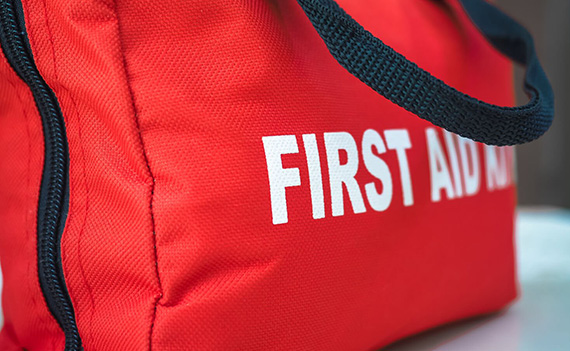
Duration
3 hours
Course Access
30 days
Online
Self-paced online learning
Cost
£25 (+VAT)
Multi-User Saving
Save £ with multi user pricing
HSE guidelines state that employers should ensure their first aiders remain competent to perform their roles. As such, it is strongly recommended that first aiders undertake annual refresher training to practise their skills and update their knowledge on the latest first aid procedures.
The First Aid at Work Annual Refresher (QAR) qualification is specifically designed to allow qualified first aiders to update their first aid skills yearly until requalification training is required.
Learners will gain renewed confidence having had the opportunity to recap on essential first aid theory and video content.
The objective of the qualification is to benefit Learners by enabling them to refresh the knowledge and practical competencies needed to deal with a range of first-aid situations. It is designed to refresh their skills and expertise and avoid skill fade.
Learning outcomes:
- Identify the role and responsibilities of a first aider
- Identify how to minimise the risk of infection to self and others
- Identify the need for consent to provide first aid
- Identify recording and reporting requirements
- Understand how to conduct a scene survey
- Understand how to conduct a primary survey of a casualty
- Understand when to summon appropriate assistance
- Identify when to administer Cardiopulmonary Resuscitation (CPR)
- Understand how to conduct a secondary survey of a casualty
- Justify when to place a casualty into the recovery position
- Recognise a casualty who is suffering from a seizure
- Recognise suspected epilepsy
- Identify how to administer first aid to a casualty who is experiencing a seizure
- Identify how to administer first aid to a casualty suffering from epilepsy
- Define shock, and identify the different types of shock
- Recognise a casualty who is suffering from shock
- Identify how to administer first aid to a casualty who is suffering from shock
- List the basic anatomy of the circulatory system
- List normal heart rates
- Understand how to take a pulse
- Recognise suspected heart attack
- Identify how to administer first aid to a casualty suffering from a heart attack
- Angina physiology, signs and symptoms
- Angina attack treatment
- Recognise suspected stroke
- Identify how to administer first aid to a casualty suffering from a stroke
- Identify the severity of external bleeding
- Understand the theory of how to control external bleeding
- Identify when to pack a wound or use a tourniquet
- Understand the theory of how to administer first aid to a casualty with a nosebleed
- Identify how to administer first aid to a casualty with – Small cuts, Grazes, Bruises and Splinters
- Identify the factors that affect the severity of burns and scalds
- Identify how to administer first aid for burns
- Recognise diabetes
- Identify how to administer first aid to a casualty suffering from diabetes: Hypoglycaemia and Hyperglycaemia
- List the components and functions of the respiratory system
- Describe the mechanics of respiration
- Describe how the respirator control centre controls breathing
- Explain the definition of hypoxia
- List the major causes of hypoxia
- Recognise suspected asthma
- List the signs and symptoms of an asthma attack
- Identify how to administer first aid to a casualty suffering from asthma
- Describe the physiology of hyperventilation
- List the signs and symptoms of hyperventilation
- Treat someone hyperventilating
- Identify when choking is mild or severe
- Identify how to administer first aid to a casualty who is choking
- Recognise a suspected: flail chest and penetrating chest injury
- Recognise a suspected: flail chest and penetrating chest injury
- Recognise a suspected head injury
- Identify how to administer first aid for a suspected head injury
- Identify the routes that poisons can take to enter the body
- Identify the routes that poisons can take to enter the body
- Identify the routes that poisons can take to enter the body
- Identify the routes that poisons can take to enter the body
- Identify the routes that poisons can take to enter the body
- Identify the routes that poisons can take to enter the body
- Know how to treat various types of wounds
- Know how to treat an embedded object
- Know how to treat a crush injury
- Know how to administer first aid to a casualty with an eye injury involving; Dust, Chemicals, Embedded objects
- Recognise suspected: Fractures and dislocations and Sprains and strains
- Identify how to administer first aid for fractures and dislocations, sprains and strains
- Recognise suspected spinal injury
- Know how to administer first aid for a suspected spinal injury
- Section 1: Roles and Responsibilities of a First Aider
- Section 2: Incident and Casualty Assessment
- Section 3: Unconscious Casualty and Management of a Seizure and Shock
- Section 4: Circulatory System, Heart Illness and Stroke
- Section 5: Bleeding and Minor Injuries
- Section 6: Burns, Diabetes and Hypo/Hyperglycaemia
- Section 7: The Respiratory System, Hypoxia, Asthma, Hyperventilation & Choking
- Section 8: Chest and Head Injuries
- Section 9: Poisoning and Severe Allergic Reactions
- Section 10: Wounds and Bleeding Extras
- Section 11: Fractures, Dislocations, Strains and Spinal Injuries
Multi-User Savings
Find the perfect plan for your business.
